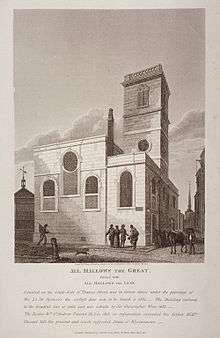Joseph John Skelton
Joseph John Skelton (1783–1871) was an English engraver.
Life
He was brother of William Skelton, and became an engraver specialising in topographical and antiquarian subjects. Before 1819 he went to live at Oxford. Later Skelton settled in France. He was elected a Fellow of the Society of Antiquaries of London in 1825; his name disappears from its lists in 1844.
Works

At Oxford he published Oxonia Antiqua Illustrata (1823); Antiquities of Oxfordshire, from drawings by F. Mackenzie (1823); Pietas Oxoniensis, or Records of Oxford Founders (1828); and Engraved Illustrations of Antient Arms and Armour from the Collection at Goodrich Court from the Drawings, and with the Descriptions of Dr. Meyrick, (2 volumes, 1830). He also engraved the heading to the Oxford almanacks for the years 1815 to 1831, from drawings by F. Mackenzie and C. Wild; and executed a set of fifty-six etchings of the antiquities of Bristol after H. O'Neill.
In France he engraved many of the plates to Charles Gavard's Galeries Historiques de Versailles, 1836; Jean Vatout's Le Château d'Eu, 1844; and Eusèbe Girault de Saint-Fargeau's Les Beautés de la France, 1850.
References
- Smith, Greg. "Skelton, Joseph John (1783–1871)". Oxford Dictionary of National Biography (online ed.). Oxford University Press. doi:10.1093/ref:odnb/25663. (Subscription or UK public library membership required.)
 "Skelton, William". Dictionary of National Biography. London: Smith, Elder & Co. 1885–1900.
"Skelton, William". Dictionary of National Biography. London: Smith, Elder & Co. 1885–1900.
- Attribution
![]() This article incorporates text from a publication now in the public domain: "Skelton, William". Dictionary of National Biography. London: Smith, Elder & Co. 1885–1900.
This article incorporates text from a publication now in the public domain: "Skelton, William". Dictionary of National Biography. London: Smith, Elder & Co. 1885–1900.